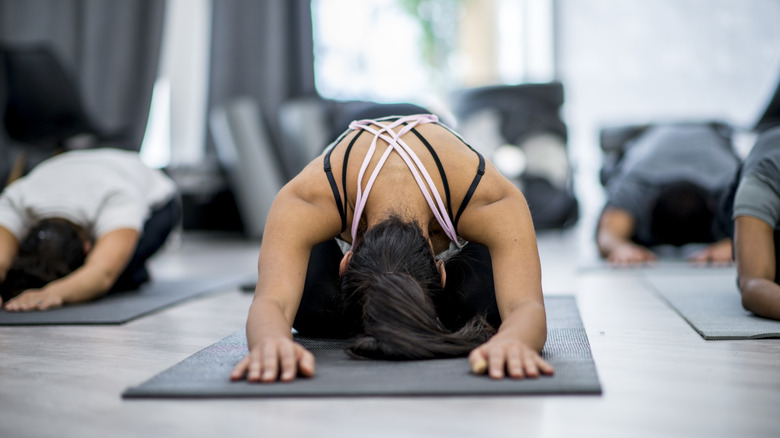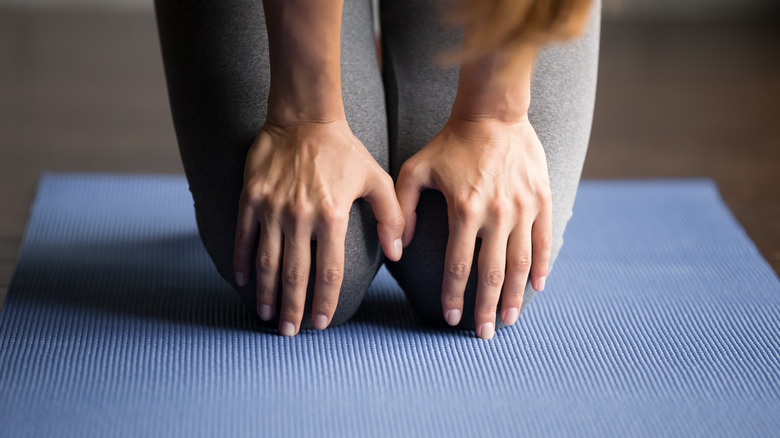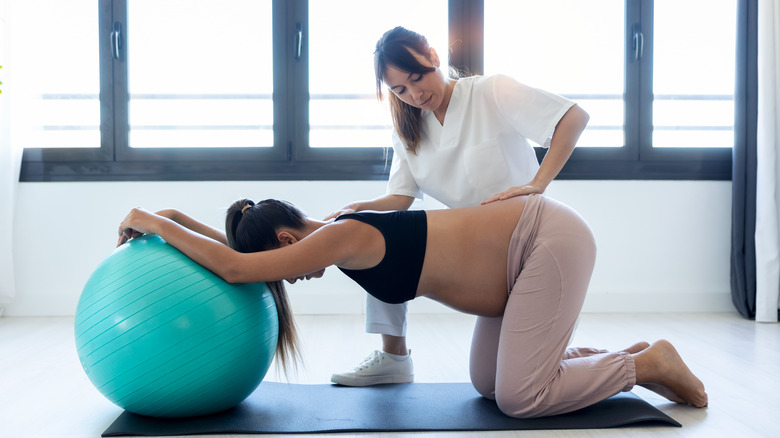Reasons You Might Want To Avoid Doing Child's Pose In Yoga
Child's pose — known in Sanskrit as balasana — is one of the most common positions found in any yoga class. It's known as a resting pose, making it an ideal place to stop and catch your breath during a particularly challenging practice.
Even as a break between postures, however, your body is doing plenty of work when in child's pose. WebMD describes it as simultaneously "lengthening your spine, opening your hips, and stretching your thighs." Reaching out along the floor stretches the upper back muscles — a well-needed antidote if you work at a desk all day. It also helps to loosen your hip flexors and glutes. The gentle compression of the stomach is beneficial to digestion. And the pose also stretches a few areas that normally don't get targeted when you're trying to loosen up — namely, the knees and the ankles.
Because child's pose is considered a restorative posture, it's often used as a mini-rest during flow or to wind down toward the end of a high-energy class. If you've practiced this pose, you've likely noticed an almost-immediate calming effect. The position physically turns you inward, directing your attention to what's happening in your own inner experience.
Despite being a restful pose, however, child's pose isn't suitable for every body. Here's when to skip it — and what you can do instead.
Avoid child's pose if you have these conditions
There are three things you should keep in mind when considering whether to do any yoga pose: the points of pressure on the body, the compression of internal organs, and the relationship of the head to the heart.
First, child's pose is traditionally performed on the knees, with the tops of the feet pressing into the ground. If you have knee or ankle pain, this can be extremely uncomfortable. It might even exacerbate your injuries.
Second, balasana is categorized as a forward fold — so settling into it for any length of time means a pretty deep bend in the middle. Pregnant people may find this especially uncomfortable in the second and third trimesters. However, the pose isn't particularly dangerous to expecting parents and can be practiced with modifications.
Lastly, child's pose belongs to a category of postures known as inversions, where the head is positioned below the heart. Because these poses cause blood to rush to your face, they should be practiced with caution. Healthline specifies that those with high blood pressure and other circulatory conditions should be especially careful.
Poses that can get you similar benefits
In any yoga class, the most important part of the practice is listening to your body — which is as much about safety as it is about developing the mind-body connection. There's no need to do anything dangerous to get the most out of your yoga practice. By keeping those three factors in mind, you can modify your practice to be safe and effective.
To avoid knee sensitivity while still maximizing the upper body stretch, try a simple overhead stretch. You can alternate reaching arms overhead, or walk them diagonally up a wall.
You can also elevate a traditional kneeling child's pose. Using blocks and pillows underneath the hands, head, or even your entire torso can relieve the weight on your knees. If you're pregnant or need more space to accommodate your torso, keep your knees wide. You can also flip the entire pose. Lay on your back and draw your knees in toward your chest for a similar stretch.



